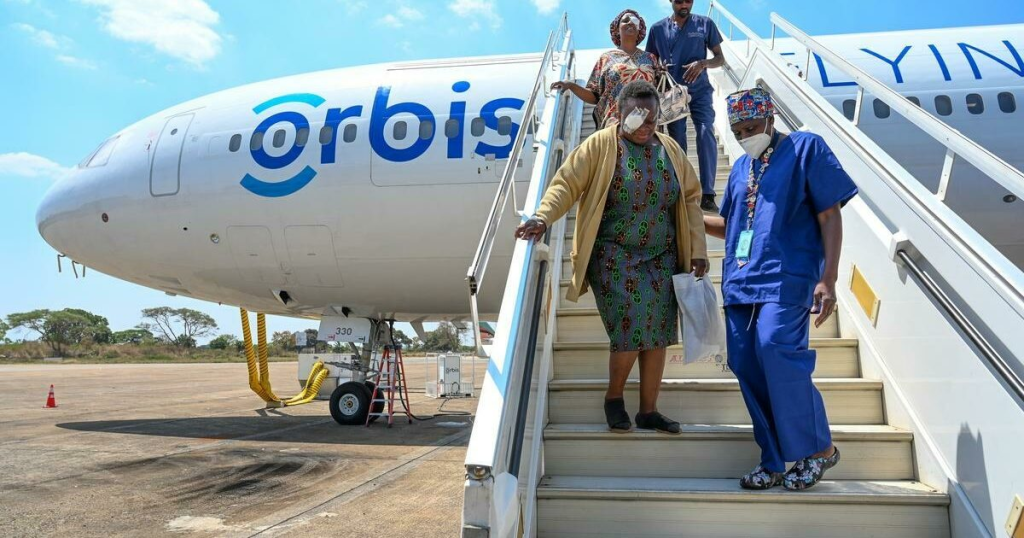
(November 2011) "Safety management system" — the very name sounds intimidating. I have to admit that I was not initially excited about the idea of a safety management system. I figured it was just another complicated set of rules, procedures and acronyms that would require a lot of time while not really accomplishing anything significant. My attitude changed earlier this year when I had an opportunity to attend a two-day workshop on safety management systems at the annual conference of the International Association of Missionary Aviation (iamanet.org).
Safety has always been an issue for missionary aviation, and the association is embracing safety management systems as a way to reduce accidents and enhance its members’ overall operating effectiveness.
Like aviation in general, early missionary operators didn’t have much in the way of experience or knowledge to guide them, and safety often consisted of the best intentions of the pilot, along with information shared with a few other pilots operating in the area. As missionary aviation organizations grew, they typically instituted some sort of safety procedures and regulations. However, there was little consistency, and once the “safety department” was in place, it wasn’t given much attention. Despite the common phrase “safety first,” safety was often last on the agenda. Safety procedures had to be in place, but ultimately safety was something that took important time from flight and maintenance operations. As far as management was concerned, safety was something for pilots, and management had no need to be involved or concerned about safety.
This approach leads to a number of problems:
• It is almost 100 percent reactive. After an accident, an investigation determines the causes, and then new regulations and procedures are put in place to avoid that adverse outcome in the future.
• Management’s lack of interest allows people to ignore unpopular safety rules. Management may even undermine safety in a misguided attempt to enhance profits.
• In this atmosphere of indifference toward safety, various safety procedures and regulations can gradually fall by the wayside in actual operations, something called “procedure slip.”
Safety management systems (SMS) grew out of the realization that we have made great progress addressing the technical and human factor issues that have led to accidents, but we have barely scratched the surface in dealing with the organization’s role in accident prevention. Establishing an SMS leads an organization to examine its operations and decision-making structure. The goal is to go beyond simply reacting to adverse events to actively seeking out hazardous processes and conditions to identify and rectify potential threats to safety. Because safety issues are often also quality issues, the benefits of implementing an SMS go far beyond avoiding accidents to enhancing the overall effectiveness and operating efficiency of the organization.
The SMS ball got rolling in a meeting in February 2009 that included the FAA Office of Aviation Safety, the European Aviation Safety Agency, the International Civil Aviation Organization and Transport Canada Civil Aviation. The intent was that, rather than having a number of organizations all working independently to develop the framework of SMS, this Safety Management International Collaboration Group (SM ICG) would work to share information on ideas, best practices and implementation resulting in one basic framework that everyone could use to build their own SMS. The products it develops will be available through the Internet. At this point the ICAO requires that an SMS be developed for operations, maintenance, air traffic services, airports, flight training and design and production of aircraft, which pretty much covers most of commercial aviation.
So what does an SMS look like? Obviously an SMS for an airplane manufacturer would look quite different from an airline SMS, which would in turn be very different from an SMS for air traffic control. However, the common goal is to develop a cohesive and pervasive safety culture throughout the organization that involves each employee in actively searching for weaknesses in the organization that could lead to an accident or other adverse event. There are four basic components to an SMS:
Safety Policy
The entire framework of an SMS rests on a clear commitment from senior management to safety management through the SMS. This includes establishing clear safety objectives and committing to manage to those objectives. That in turn leads to establishing the organizational structure, methods and processes to meet those objectives. A key element is transparency in management of safety with processes for employee reporting and accountability for both management and employees. It is anticipated that the safety policy would build on processes and procedures that are already in place, and that it would facilitate communication and cooperation across the organization.
Safety Risk Management
This is a formal process that identifies hazards within the system, assesses the risk level of those hazards and then controls the risk to ensure it is at an acceptable level. Rather than being a standalone process, safety risk management can be embedded in the processes used to provide the organization's products or services.
Safety Assurance
This is where the accountability comes in. Safety assurance involves a continuous effort to evaluate the effectiveness of the risk control strategies that have been implemented while at the same time working to identify new hazards. It basically “takes the temperature” of the organization to ensure that the organization is meeting or exceeding all safety requirements. It is unfortunate that safety audits are often conducted with the objective of catching people doing something wrong. It is much better to approach the safety assessment as a consultation: working together to analyze what is going well and looking for opportunities to improve safety by minimizing risk.
Safety Promotion
The final component of an SMS focuses on creating a positive safety culture within all levels of the workforce through communication and training. This would include training in the implementation of the SMS along with communicating other information that can help to identify and mitigate risk. Probably the most powerful way to accomplish this is through lessons-learned stories. Many organizations have safety briefings that tend to be a dry and somewhat boring rehash of the standard "do's and don'ts" pertaining to some issue like electrical or chemical safety. Lessons-learned stories, on the other hand, are actual stories of how people almost or did get in trouble, and how others could avoid that same mistake. Because they are typically somewhat humorous stories about real people in real situations, they are interesting to read — and the lesson more likely to be learned, remembered and applied.
If all this sounds intimidating, it is important to realize that an SMS is fully scalable. At its core, an SMS is a set of management practices, so a small organization can easily integrate an SMS without establishing a safety department or hiring safety personnel. On the other hand, larger organizations that do not have a safety department may be led to institute one. Also, the SMS doesn’t take the place of, or in any way compete with, quality systems. An SMS is focused on identifying and mitigating risk, while a quality system is focused on process improvement, so while they may use the same or similar tools, the objective is very different. Ideally, safety and quality systems will work together to produce the most effective organization possible.
As I write this, aviation authorities around the world including the FAA are moving forward to require the various organizations they work with to institute safety management systems. They are doing this because they realize that this is the most important step to take at this time to enhance the safety of those organizations. In my work as a consultant with organizations and corporations around the world, probably the most common frustration I find is that management is not "walking the talk." For example, aerospace management says that "mission success is job one." However, the employees know that, in reality, mission success is job one only if they meet the schedule and the budget. A safety management system requires management to be involved in the entire safety process, and to apply safety principles to their own processes and decisions. I can't think of anything that would do more to enhance safety.
_
For more information, visit www.faa.gov/about/initiatives/sms/._
Read Jay Hopkins former articles on this topic: "Managing Aviation Safety Well" and "Management's Role."

Sign-up for newsletters & special offers!
Get the latest FLYING stories & special offers delivered directly to your inbox






